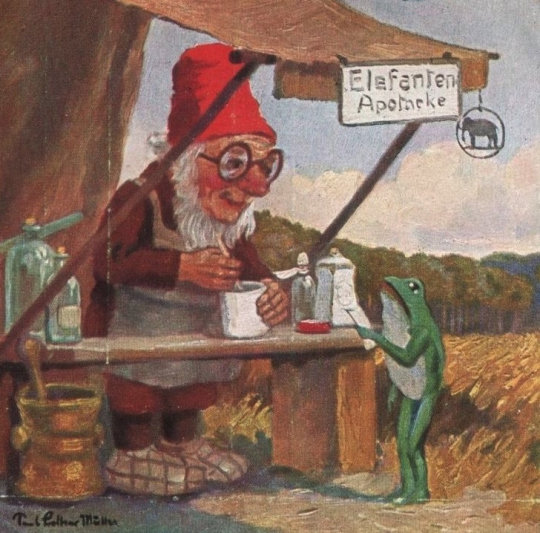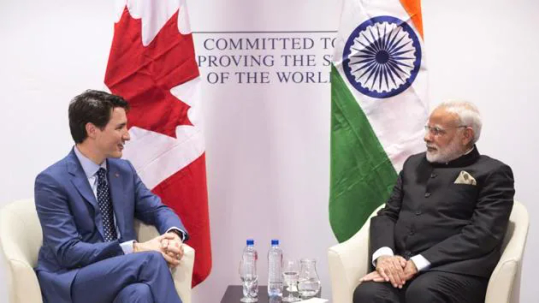#Cananda
Explore tagged Tumblr posts
Text

Jessica Moss
source: vanguard © 📸: ???
9 notes
·
View notes
Video
Morning reflection by Georgie Alexon Via Flickr: This photograph of an American Avocet was taken just outside of Calgary, Alberta, Canada Females are similar in appearance to males but with a shorter and more upwardly-curved bill, male bills are longer and straighter. They are the only avocet with distinct breeding and non-breeding plumages. During the breeding season, the feathers turn a rusty orange color, but in the winter, they are grayish white. I believe this is a male but please correct me if I am wrong. -Recurvirostra americana
#american#avovet#shorebird#bird#wildlife#nature#photography#canon#eos#outdoors#alberta#cananda#oiseaux#countryside#reflection#colours#red#white#green#pond#water#day#Recurvirostra americana#Recurvirostridae#spring#morning#aves#vogel#colors#flickr
20 notes
·
View notes
Text
The face of a man who knows how to spell


4 notes
·
View notes
Text










Craigdarroch Castle is located in Victoria, British Columbia, Canada. Wealthy coal baron Robert Dunsmuir built the Victorian-era Scottish Baronial mansion in the late 1800’s. Dunsmuir died before the castle was completed, and his sons finished the castle. Upon widow Dunsmuir’s death, the castle was sold to a land speculator who divided the estate into buildable lots. He then raffled the castle to the residents of the parcels. The winner, Solomon Cameron, mortgaged the castle for other investments that unfortunately failed. Craigdarroch Castle became the property of the Bank of Montreal in 1919. The castle was restructured to serve as a military hospital until the 1970’s. Currently, the castle is owned by the Craigdarroch Castle Historical Museum Society. The castle houses furnishings from the 1890’s, and numerous stained-glass windows that are documented by The Institute of Stained Glass in Canada. There’s intricate woodwork, which includes a prefabricated 87 step grand oak staircase built in Chicago, Illinois. The exterior boasts Romanesque arches, recessed entrances, rows of windows, and cylindrical towers with conical capstones.
4 notes
·
View notes
Text
omg so i know wasaga beach in real life doesn't have a friggin' school called wasaga junior high or wasaga high, don't tell me i just googled to find out.
i mean seriously, what school sean cameron would've went to if he existed in their hometown? research for fics let me tell you, a rewarding experience lmfao! obviously a public school, state run, maybe no extracurriculars, perhaps underfunded, all money goes to like sports and he's not a super jock but maybe did do a little bit of sports like wrestling which he did even do at dsc, basketball too or even because he had to or someone kind of wanted him to 'succeed' or perhaps it was his social worker. could've been a bus kid. if it was a good school i doubt he'd been sent to toronto or attended degrassi while living with tracker. the school geographically i assume, it wasn't close but it wasn't far. couldn't walk there, his parents probably didn't have a car that worked well enough, financially strapped, hungry, not a good place most likely.
by in contrast, the locals like the poguelife of outer banks and the kooky shoobies for reference. haves and have nots. who has a summer home? who day trips? if sean lived in wasaga he likely had odd jobs around, whoever would hire a teenager pretty much so little mom and pop shops, ice cream or water ice window or stand, maybe waited tables but lost his temper with a mean shoobie customer who will leave at the end of the summer anyway quit. not great with confrontation.
is this type of thing a thing? will i make it a thing in this fic? absolutely. when do i ever not explore backstories and such? i wanted sean to talk or show what his time was like for the time in wasaga. a missed opportunity in early season 6 or let's face it ever. with context clues, throwaway lines in episodes painting the picture and throwing stuff like that around i tell a story. a snippet. a word and grab inspo from these types of things. it's fun. that's another of the many reasons i love to write. i love creating worlds within worlds. weaving words with action, diologue and symbols and obviously lots of romance.
for elementary birchview dunes elementary or worseley elementary for upper grades, byng public school not sure.
#in the drafts#anysysis#nagging and burning questions forever#wasaga beach#location#cananda#sean cameron#tracker cameron#writing#writing tag#research#i was born to make queue happy
3 notes
·
View notes
Text
call your mom mississagua cause the miss is sauging on my nuts
1 note
·
View note
Text

France Jobin - #F6E36B From France Jobin - Hues (SUPERPANG, 2021)
#2020s#Cananda#France Jobin#Electronic#Ambient#Minimal#experimental#Drone#women in electronic music#SUPERPANG#2021#week 09 2024#Bandcamp
3 notes
·
View notes
Audio
Listen/purchase: Onto Adventure pt. 2 (demo) by Wyrd Gnome


Onto Adventure pt. 2 (demo)~by Wyrd Gnome .
1 note
·
View note
Text

#alb#ai#abeink#ai girl#colloquy#handwriting#colloquy art#peace#peace 4 peace#peace for peace#photography#ontario#cananda#abeink1030
1 note
·
View note
Text

More Test on the street of Toronto - Younge and Bloor. Jan 2024 Film Mission
#street photography#toronto#photo babak#Homeless In Toronto#Homeless#Cananda#Film Mission#Toronto Freedom Rally#Trudeau must go
0 notes
Text
India and Canada: A Delicate Balance in Managing Khalistan Concerns

India and Canada, two diverse and culturally rich nations, share a history of diplomatic relations that have often been influenced by various factors. In recent times, one significant concern that has garnered international attention is the Khalistan issue. In this article, India and Canada's relations with regard to Khalistan are discussed in detail along with their efforts to preserve a delicate balance.
Understanding Khalistan
The search for a separate Sikh state, known as Khalistan. It has been a source of conflict over many years. The Sikh abroad, particularly in nations like Canada, where a significant Sikh community resides, has played a role in the desire for Khalistan. This sensitive topic has led to worries about prospective separatist movements and how they affect bilateral ties with India- and Canada.
Canada's Sikh Community
There is a sizable Sikh population in Canada, and many of them openly support Khalistan. This dynamic poses a unique challenge for Canadian politicians, who must balance the interests of this powerful group. Canada's foreign responsibilities, especially preserving good relations with India.
India's Concerns
From India's perspective, The Khalistan problem is seen as a challenge to the sovereignty of India. The Indian government has made it clear. it views the Khalistan movement as a separatist one with possible security implications.
Diplomatic Challenges
Managing the Khalistan issue in diplomatic relations between India and Canada is undoubtedly a sensitive task. Canada has to address the issues that the Sikh community is worried about. while also respecting India's sovereignty and fears about secession. Canada has tried to achieve this delicate balancing act through a number of different approaches.
Bilateral Engagements
To address the Khalistan problem, both countries have taken part in high-level meetings and diplomatic measures. To stop any extremist actions connected to Khalistan, these contacts have included discussions between leaders, intelligence exchange, and collaboration on terrorism activities.
Educational and Cultural Exchanges
Canada has supported social and educational connections between its Sikh population and India. These conversations attempt to increase mutual understanding and conversation. while lowering the likelihood of politicization or support for separatist groups.
Challenges Ahead
Notwithstanding these initiatives, problems still exist. Canada is still trying to figure out how to strike the correct balance between defending free expression and thwarting support for secession. India is also on high alert for any potential return of activities connected to Khalistan.
Conclusion
Concerning Khalistan, the relationship between India and Canada involves a delicate balancing act between assuaging the worries of the Sikh population in Canada and defending India's sovereignty. While addressing the difficulties brought on by the Khalistan issue, both countries understand how important it is to keep close diplomatic relationships. Continued communication, teamwork, and a dedication to sustaining common principles of peace and stability will probably be necessary for these connections to succeed in the future. Read the full article
0 notes
Text
For those of us on the east coast, we’re experiencing smoke & haze from wildfires in Canada, unlike anything in recent history. Third Pod from the Sun talked w/ statistician Dan Cooley about using math & stats to explain relationships b/t climate & fire
https://blogs.agu.org/thirdpodfromthesun/2023/06/09/solving-for-climate-understanding-the-wild-in-wildfire/
0 notes
Text

Good night …
140 notes
·
View notes
Text
WHO THE HECK SAYS “EY” AFTER EVERYTHING?
DO ANY OF Y’ALL SAY IT?
never knew i was friends with a CANADIAN
#reg’s things#I hate being accused of#candadiasm#canaddiansm#how do you spell canda#cananda#anyways#I am not candiam
34 notes
·
View notes
Text

just saw the usual mclaren race suits and i’m feeling immediately displeased. i miss the monaco yellow and green. why are they orange again.
#f1#formula1#formula one#mclaren#lando norris#oscar piastri#cananda go#i HATE THE ORANGE SUITS#IDC ABOUT PAPAYA BRING BACK PINEAPPLE
22 notes
·
View notes